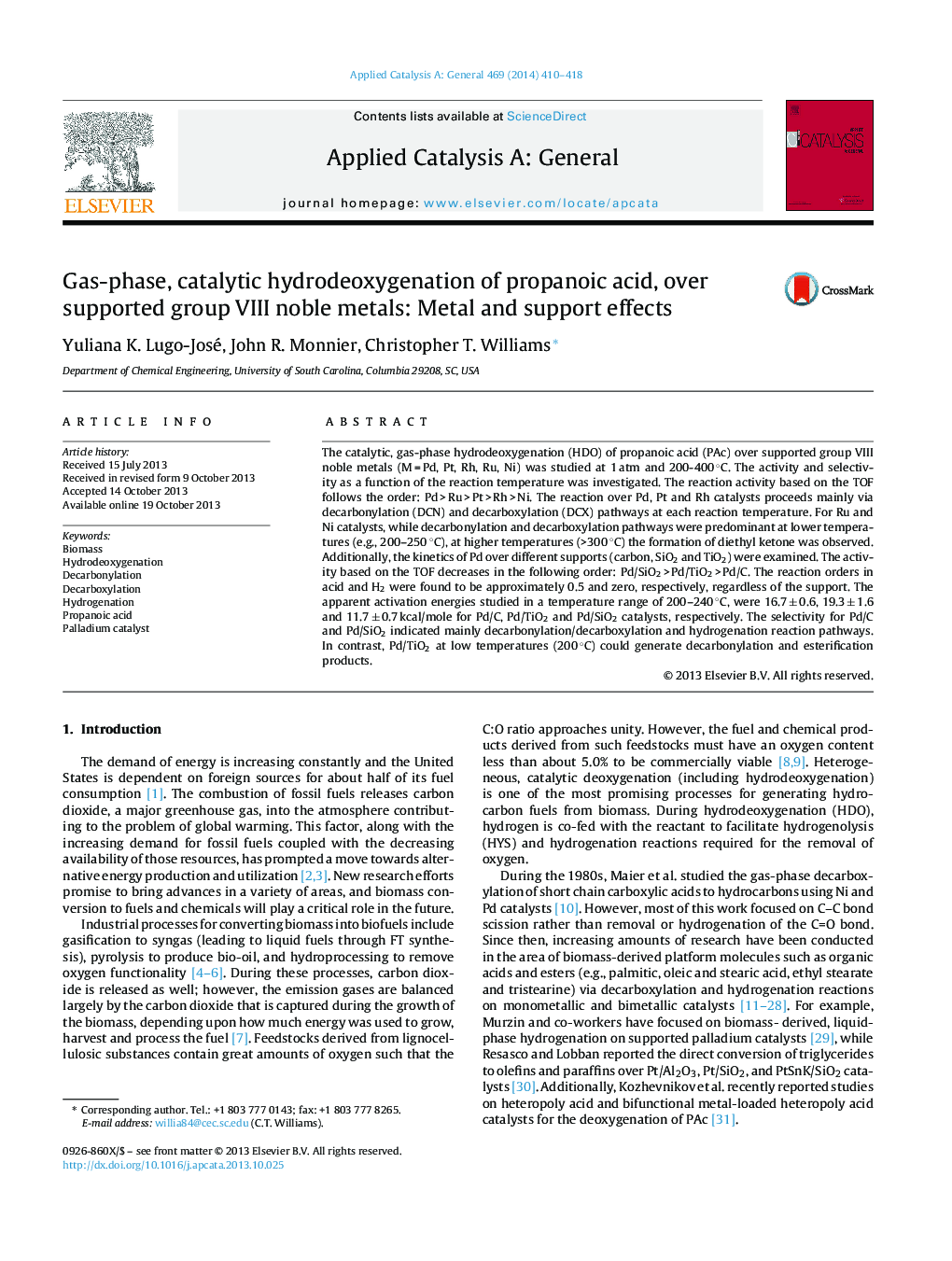| کد مقاله | کد نشریه | سال انتشار | مقاله انگلیسی | نسخه تمام متن |
|---|---|---|---|---|
| 40193 | 45845 | 2014 | 9 صفحه PDF | دانلود رایگان |
• Propanoic acid HDO over supported group VIII metal catalysts showed Pd as most active.
• Selectivity was primarily towards decarbonylation and decarboxylation pathways.
• The apparent reaction orders for acid (∼0.5) and hydrogen (∼0) were the same for Pd supported on C, SiO2, and TiO2.
• Activation energies over supported Pd are all in the range ∼12–19 kcal mol−1.
The catalytic, gas-phase hydrodeoxygenation (HDO) of propanoic acid (PAc) over supported group VIII noble metals (M = Pd, Pt, Rh, Ru, Ni) was studied at 1 atm and 200-400 °C. The activity and selectivity as a function of the reaction temperature was investigated. The reaction activity based on the TOF follows the order: Pd > Ru > Pt > Rh > Ni. The reaction over Pd, Pt and Rh catalysts proceeds mainly via decarbonylation (DCN) and decarboxylation (DCX) pathways at each reaction temperature. For Ru and Ni catalysts, while decarbonylation and decarboxylation pathways were predominant at lower temperatures (e.g., 200–250 °C), at higher temperatures (>300 °C) the formation of diethyl ketone was observed. Additionally, the kinetics of Pd over different supports (carbon, SiO2 and TiO2) were examined. The activity based on the TOF decreases in the following order: Pd/SiO2 > Pd/TiO2 > Pd/C. The reaction orders in acid and H2 were found to be approximately 0.5 and zero, respectively, regardless of the support. The apparent activation energies studied in a temperature range of 200–240 °C, were 16.7 ± 0.6, 19.3 ± 1.6 and 11.7 ± 0.7 kcal/mole for Pd/C, Pd/TiO2 and Pd/SiO2 catalysts, respectively. The selectivity for Pd/C and Pd/SiO2 indicated mainly decarbonylation/decarboxylation and hydrogenation reaction pathways. In contrast, Pd/TiO2 at low temperatures (200 °C) could generate decarbonylation and esterification products.
Figure optionsDownload high-quality image (147 K)Download as PowerPoint slide
Journal: Applied Catalysis A: General - Volume 469, 17 January 2014, Pages 410–418
